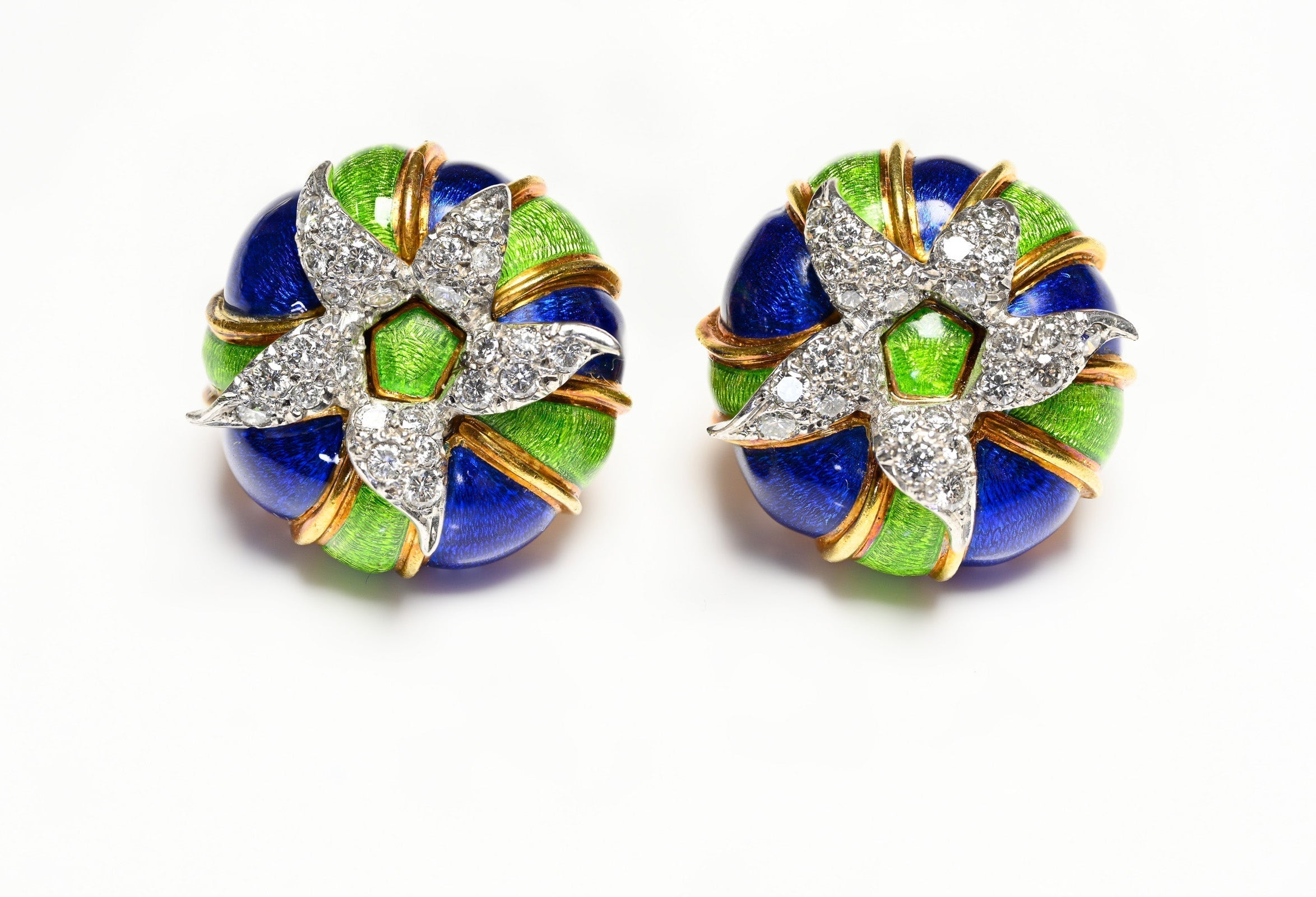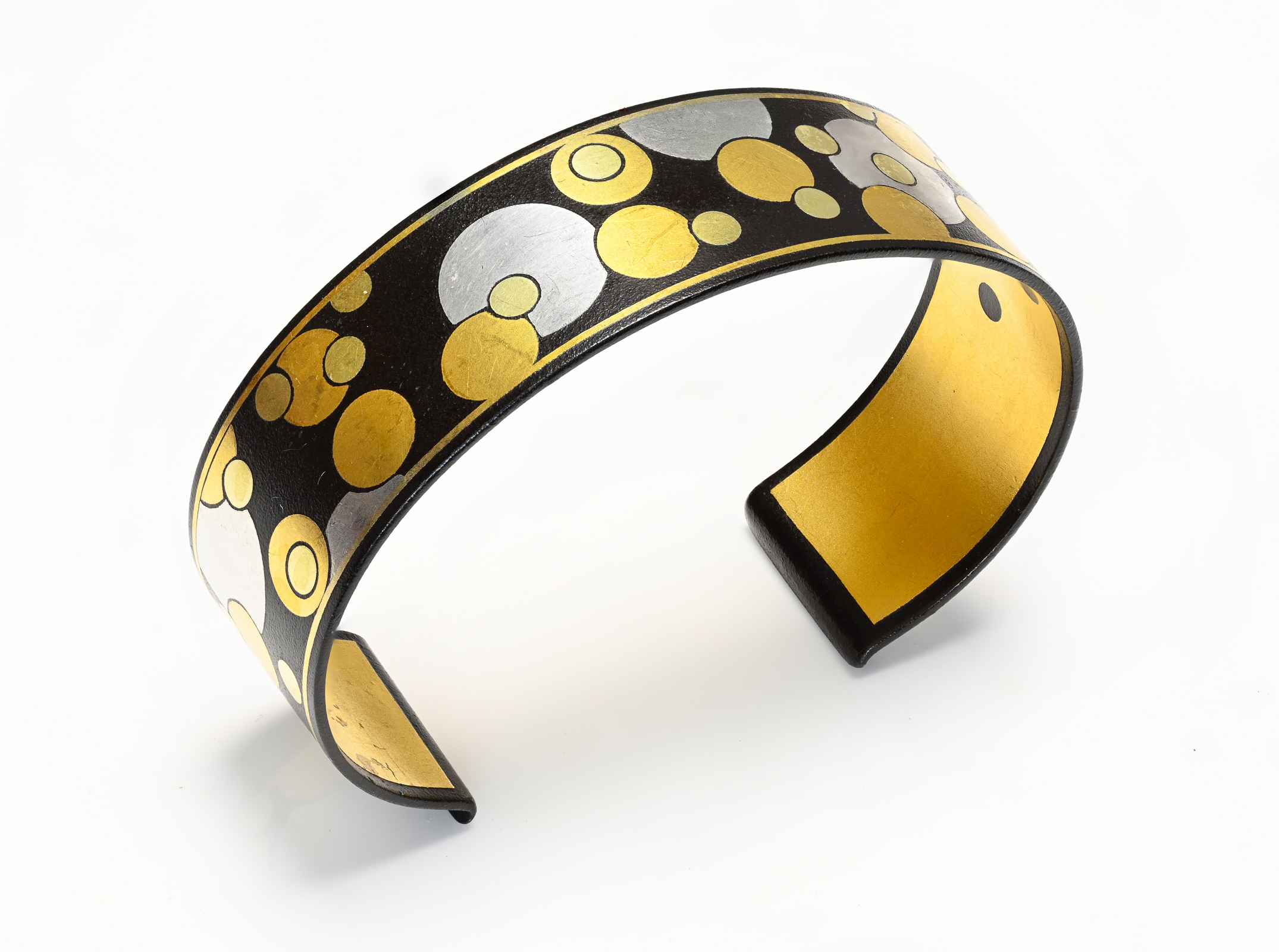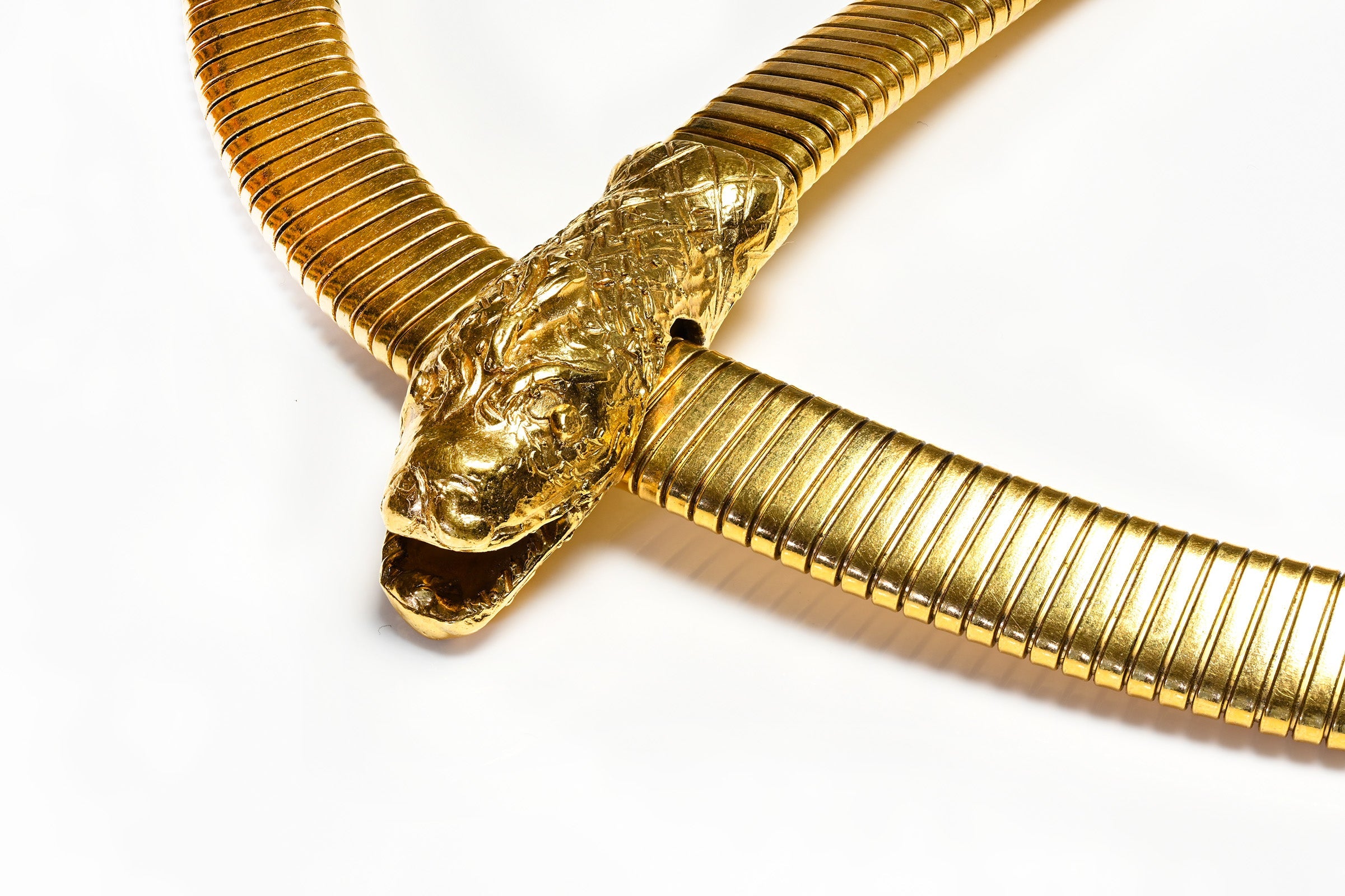
Jean Schlumberger – The Colorful Story of a Creative Jewelry Genius
Renowned for his fantastical creations, Jean Schlumberger was one of the most creative artists of the 20th century.
An elegantly sophisticated man, Jean Schlumberger had a remarkable talent for making the environment around him come to life, encasing his fantastical designs of cloth, animals, and plants in diamonds and other precious stones.
Jean Schlumberger served in the army during World War II, founded jewelry brands exclusively for the elite in Paris and New York, and collaborated with numerous renowned fashion houses, including Elsa Schiaparelli and Lucien Lelong.
However, it was his work creating small marvels from vibrant nature at Tiffany & Co. that cemented his reputation and most lasting legacy.

Jean Schlumberger – The Journey
Jean Schlumberger was born in 1907 in Alsace, France, into a well-known family of textile producers. From a young age, he showed a knack for drawing. The five-century-old Schlumberger family, which also owned a bank, initially expected Jean to pursue a degree in finance to take over the family business.
However, Jean Schlumberger followed his artistic instincts, choosing to leave school and move to Paris after rediscovering his love for fashion and the arts. He began working for the French fashion designer Lucien Lelong and later for an art publication.
Drawn to the novelty and originality of Paris in the 1930s, Schlumberger was captivated by the city's colorful and flamboyant modernity.
With limited funds to buy materials, Jean Schlumberger often wandered through Paris's Marché aux Puces, a flea market, in search of Victorian antiques on weekends.
One day, he discovered Meissen porcelain flowers adorning an antique chandelier and began crafting exquisite brooches for his close-knit circle of creative friends.
These designs became an instant success. The increasing volume of design orders led him to leave his job and devote himself full-time to jewelry design.
After opening an atelier on Rue de la Boétie, Jean Schlumberger became a highly sought-after jewelry designer among the Parisian elite. Fashion designer Elsa Schiaparelli quickly noticed his talent and, in 1937, appointed him as head of the button and jewelry design team for her fashion house.
His work at Schiaparelli earned him instant success, both in Paris and internationally. He became known for creating accessories like Madame Suzy’s hat pin and Delman's wedge-heeled sandals, gaining recognition for his original designs on both sides of the Atlantic.
Jean Schlumberger served in the French Army during World War II and witnessed the Battle of Dunkirk, a pivotal event in the war.
After the war, he moved to New York, USA, where he reconnected with Nicolas Bongard, a childhood friend who was creating handcrafted buttons in Manhattan.
In 1947, the duo opened a small store, and soon after, Schlumberger’s glittering brooches depicting birds and sea life were being worn by the most stylish women of the time.
Jean Schlumberger passed away in Paris in 1987, at the age of 80.
Tiffany & Co.
“I try to make everything look as if it were growing, uneven, at random, organic, in motion. I want to capture the irregularity of the universe,” Schlumberger once said.
When Jean Schlumberger began his renowned collaboration with Tiffany & Co. in 1956, he ushered in an unparalleled era of jewelry design.
At Tiffany, Schlumberger was given free rein to explore his creative impulses, resulting in unique jewelry designs that combined exotic natural stones, precious metals, and elements inspired by nature, the sea, and the animal kingdom.
Schlumberger’s time at Tiffany produced some of the brand’s most iconic pieces, including the Cooper bracelet, the Sixteen Stone diamond ring, the elaborate paillonné enamel bangles, and his famous Bird on a Rock brooch.

Iconic Creations
An elegantly sophisticated man, Jean Schlumberger had a remarkable talent for making the environment around him come to life, encasing his fantastical designs of cloth, animals, and plants in diamonds and other precious stones.
Jean Schlumberger served in the army during World War II, founded jewelry brands exclusively for the elite in Paris and New York, and collaborated with numerous renowned fashion houses, including Elsa Schiaparelli and Lucien Lelong.
However, it was his work creating small marvels from vibrant nature at Tiffany & Co. that cemented his reputation and most lasting legacy.

Jean Schlumberger – The Journey
Jean Schlumberger was born in 1907 in Alsace, France, into a well-known family of textile producers. From a young age, he showed a knack for drawing. The five-century-old Schlumberger family, which also owned a bank, initially expected Jean to pursue a degree in finance to take over the family business.
However, Jean Schlumberger followed his artistic instincts, choosing to leave school and move to Paris after rediscovering his love for fashion and the arts. He began working for the French fashion designer Lucien Lelong and later for an art publication.
Drawn to the novelty and originality of Paris in the 1930s, Schlumberger was captivated by the city's colorful and flamboyant modernity.
With limited funds to buy materials, Jean Schlumberger often wandered through Paris's Marché aux Puces, a flea market, in search of Victorian antiques on weekends.
One day, he discovered Meissen porcelain flowers adorning an antique chandelier and began crafting exquisite brooches for his close-knit circle of creative friends.
These designs became an instant success. The increasing volume of design orders led him to leave his job and devote himself full-time to jewelry design.
After opening an atelier on Rue de la Boétie, Jean Schlumberger became a highly sought-after jewelry designer among the Parisian elite. Fashion designer Elsa Schiaparelli quickly noticed his talent and, in 1937, appointed him as head of the button and jewelry design team for her fashion house.
His work at Schiaparelli earned him instant success, both in Paris and internationally. He became known for creating accessories like Madame Suzy’s hat pin and Delman's wedge-heeled sandals, gaining recognition for his original designs on both sides of the Atlantic.
Jean Schlumberger served in the French Army during World War II and witnessed the Battle of Dunkirk, a pivotal event in the war.
After the war, he moved to New York, USA, where he reconnected with Nicolas Bongard, a childhood friend who was creating handcrafted buttons in Manhattan.
In 1947, the duo opened a small store, and soon after, Schlumberger’s glittering brooches depicting birds and sea life were being worn by the most stylish women of the time.
Jean Schlumberger passed away in Paris in 1987, at the age of 80.
Tiffany & Co.
“I try to make everything look as if it were growing, uneven, at random, organic, in motion. I want to capture the irregularity of the universe,” Schlumberger once said.
When Jean Schlumberger began his renowned collaboration with Tiffany & Co. in 1956, he ushered in an unparalleled era of jewelry design.
At Tiffany, Schlumberger was given free rein to explore his creative impulses, resulting in unique jewelry designs that combined exotic natural stones, precious metals, and elements inspired by nature, the sea, and the animal kingdom.
Schlumberger’s time at Tiffany produced some of the brand’s most iconic pieces, including the Cooper bracelet, the Sixteen Stone diamond ring, the elaborate paillonné enamel bangles, and his famous Bird on a Rock brooch.

Iconic Creations
The Tiffany Diamond
One of Schlumberger's first significant projects at Tiffany & Co. was setting the legendary 128.54-carat Tiffany Diamond in a high jewelry design.
In a bold move, Schlumberger set the fancy yellow diamond in his Ribbon Rosette necklace, which cemented his status as an artistic force in the jewelry world.
In 1995, the Tiffany Diamond was reset in Schlumberger’s iconic Bird on a Rock brooch, which was featured in a retrospective of his work at the Musée des Arts Décoratifs in Paris.
This magnificent yellow diamond, originally purchased by Charles Lewis Tiffany, remains one of the finest and rarest stones in the world, symbolizing luxury and grandeur. Only a select few have had the honor of wearing it, including Audrey Hepburn, Beyoncé, Lady Gaga, and Gal Gadot.
Tiffany & Co. continues to market variations of this iconic design, adorned with other natural stones like tanzanite, aquamarine, morganite, tourmaline, and spessartine garnet.
One of Schlumberger's first significant projects at Tiffany & Co. was setting the legendary 128.54-carat Tiffany Diamond in a high jewelry design.
In a bold move, Schlumberger set the fancy yellow diamond in his Ribbon Rosette necklace, which cemented his status as an artistic force in the jewelry world.
In 1995, the Tiffany Diamond was reset in Schlumberger’s iconic Bird on a Rock brooch, which was featured in a retrospective of his work at the Musée des Arts Décoratifs in Paris.
This magnificent yellow diamond, originally purchased by Charles Lewis Tiffany, remains one of the finest and rarest stones in the world, symbolizing luxury and grandeur. Only a select few have had the honor of wearing it, including Audrey Hepburn, Beyoncé, Lady Gaga, and Gal Gadot.
Tiffany & Co. continues to market variations of this iconic design, adorned with other natural stones like tanzanite, aquamarine, morganite, tourmaline, and spessartine garnet.
Bird on a Rock Brooch
Inspired by his family's history in the textile business and the stunning natural world, Schlumberger designed the Bird on a Rock brooch in 1965. The brooch, featuring a bird perched on a gemstone, has since achieved iconic status in the world of high jewelry.

Though originally designed to feature a yellow diamond, the brooch has been crafted with a variety of other gemstones. In 1995, Tiffany & Co. honored Schlumberger’s legacy by setting their famous Tiffany Diamond in this design.
Inspired by his family's history in the textile business and the stunning natural world, Schlumberger designed the Bird on a Rock brooch in 1965. The brooch, featuring a bird perched on a gemstone, has since achieved iconic status in the world of high jewelry.

Though originally designed to feature a yellow diamond, the brooch has been crafted with a variety of other gemstones. In 1995, Tiffany & Co. honored Schlumberger’s legacy by setting their famous Tiffany Diamond in this design.
Paillonné Enameled Croisillon Bracelet
Another masterpiece by Schlumberger is the paillonné enameled Croisillon bracelet, which showcases his technical skill in fine jewelry design. The paillonné enameling method, nearly extinct at the time, involves applying layers of enamel over gold foil, creating deep, radiant colors.
The intricate craftsmanship and revival of this technique in Schlumberger’s work left a lasting mark on the jewelry industry.
Additionally, Schlumberger designed numerous other pieces for philanthropist Bunny Mellon, including the iconic Pot de Fleurs, a gold flower with a rare Kashmir sapphire at its center.
The Craftsmanship
Schlumberger is widely considered one of the greatest jewelry designers of all time, known for his extraordinary attention to detail. He skillfully combined geometric motifs with organic shapes, often paying homage to his family’s textile heritage through his woven gold designs.
His ability to create three-dimensional textures and innovative combinations of 18k gold, platinum, and colorful gemstones set him apart. According to Tiffany & Co., his designs border on sculpture due to their intricate craftsmanship.
Schlumberger’s use of paillonné enamel, vivid gemstones, and twisted gold revived the public’s taste for bold, statement jewelry pieces.
Inspiration & Designs
Drawing inspiration from both his family’s textile heritage and the natural world, Schlumberger masterfully incorporated movement into his designs. Whether capturing the essence of the sea, the sky, or animal life, his jewelry was a testament to his ability to bring dynamic forms to life.
Schlumberger found much of his inspiration during his travels to exotic places such as Indonesia, India, and Thailand. His home in Guadeloupe also provided inspiration for many of his famous designs, including the Oiseau de Paradis brooch, which depicts a mythical bird with vibrant gemstones.
He often credited his inspiration to architecture, flora and fauna, and his memories of travels to far-off places. These influences can be seen in pieces that blend natural elements like seashells, seahorses, and flowers with intricate, organic forms.
Awards and Legacy
Schlumberger's illustrious career was recognized with numerous awards. In 1958, he became the first jewelry designer to receive the prestigious Coty Award from the Fashion Critics. In 1977, the French government honored him as a Chevalier of the National Order of Merit.
In 1995, the Musée des Arts Décoratifs in Paris held a retrospective of his work, marking only the third time the museum honored a jewelry designer in this way. Today, the Virginia Museum of Fine Arts houses the largest collection of Schlumberger’s designs, thanks to a generous donation from Bunny Mellon.
Schlumberger’s innovative creations have stood the test of time, captivating collectors and connoisseurs around the world. His timeless designs, combining art and nature, continue to inspire new generations of jewelry enthusiasts and designers.
If you would like to see some of Schlumberger’s masterpieces, we invite you to visit our website.
Another masterpiece by Schlumberger is the paillonné enameled Croisillon bracelet, which showcases his technical skill in fine jewelry design. The paillonné enameling method, nearly extinct at the time, involves applying layers of enamel over gold foil, creating deep, radiant colors.
The intricate craftsmanship and revival of this technique in Schlumberger’s work left a lasting mark on the jewelry industry.
Additionally, Schlumberger designed numerous other pieces for philanthropist Bunny Mellon, including the iconic Pot de Fleurs, a gold flower with a rare Kashmir sapphire at its center.
The Craftsmanship
Schlumberger is widely considered one of the greatest jewelry designers of all time, known for his extraordinary attention to detail. He skillfully combined geometric motifs with organic shapes, often paying homage to his family’s textile heritage through his woven gold designs.
His ability to create three-dimensional textures and innovative combinations of 18k gold, platinum, and colorful gemstones set him apart. According to Tiffany & Co., his designs border on sculpture due to their intricate craftsmanship.
Schlumberger’s use of paillonné enamel, vivid gemstones, and twisted gold revived the public’s taste for bold, statement jewelry pieces.
Inspiration & Designs
Drawing inspiration from both his family’s textile heritage and the natural world, Schlumberger masterfully incorporated movement into his designs. Whether capturing the essence of the sea, the sky, or animal life, his jewelry was a testament to his ability to bring dynamic forms to life.
Schlumberger found much of his inspiration during his travels to exotic places such as Indonesia, India, and Thailand. His home in Guadeloupe also provided inspiration for many of his famous designs, including the Oiseau de Paradis brooch, which depicts a mythical bird with vibrant gemstones.
He often credited his inspiration to architecture, flora and fauna, and his memories of travels to far-off places. These influences can be seen in pieces that blend natural elements like seashells, seahorses, and flowers with intricate, organic forms.
Awards and Legacy
Schlumberger's illustrious career was recognized with numerous awards. In 1958, he became the first jewelry designer to receive the prestigious Coty Award from the Fashion Critics. In 1977, the French government honored him as a Chevalier of the National Order of Merit.
In 1995, the Musée des Arts Décoratifs in Paris held a retrospective of his work, marking only the third time the museum honored a jewelry designer in this way. Today, the Virginia Museum of Fine Arts houses the largest collection of Schlumberger’s designs, thanks to a generous donation from Bunny Mellon.
Schlumberger’s innovative creations have stood the test of time, captivating collectors and connoisseurs around the world. His timeless designs, combining art and nature, continue to inspire new generations of jewelry enthusiasts and designers.
If you would like to see some of Schlumberger’s masterpieces, we invite you to visit our website.


















